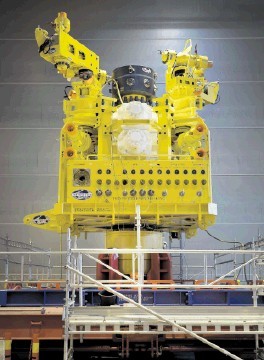
Oil Spill Response Ltd (OSRL) has taken the wraps off cutting-edge well capping equipment that can be deployed around the world in the event of a subsea well control incident.
The system is available to oil and gas companies across the industry, marking a major advancement for international oil spill response capability, which underwent a revolution in the wake of BP’s Macondo disaster in the US Gulf of Mexico almost two years ago.
Norway’s Minister for Petroleum and Energy, Ola Borten Moe, attended an inauguration at OSRL’s Base in Stavanger to commemorate the opening of the facility where the equipment is stored. This is the first of a network of facilities to be built worldwide.
OSRL’s subsea well intervention service (SWIS) is designed to provide swift subsea incident response worldwide. Its integrated subsea well intervention system includes four capping stacks to shut-in an uncontrolled subsea well and two hardware kits to clear debris and apply subsea dispersant at a wellhead, creating safer surface working conditions and enhancing bio-degradation.
The SWIS equipment is said to be suitable for the majority of known subsea wells. It can be deployed in water depths to 3,000m and control flow pressures to 15,000 psi.
The equipment will be stored for rapid deployment in four strategic locations – Norway, Brazil, South Africa and Singapore.
The first equipment is now available from OSRL’s Norway Base, and a further three devices will be delivered during Q2 and Q3 2013.
SWIS is the culmination of unprecedented industry collaboration. In 2011, nine oil and gas majors formed the Subsea Well Response Project (SWRP), pooling resources to develop equipment that could enhance subsea well control capability.
OSRL collaborates with SWRP.